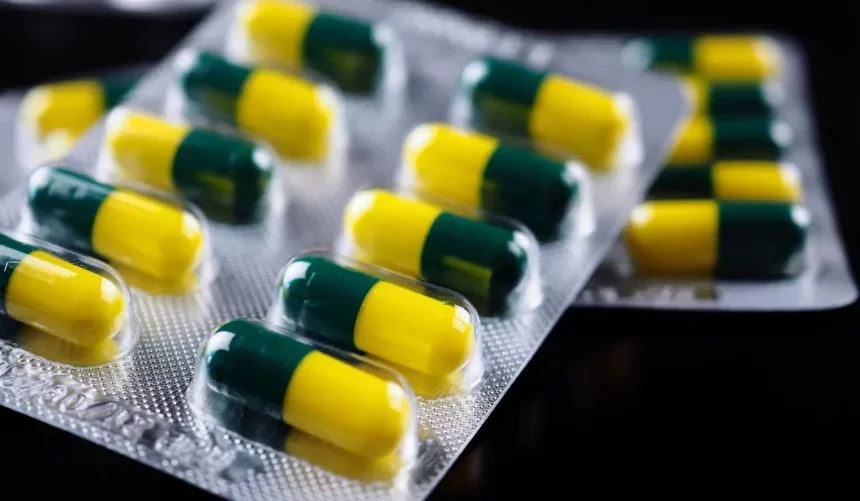What is Tramadol Addiction?
Table of Contents
- What is Tramadol Addiction?
- How Does Tramadol Work?
- How Addictive is Tramadol?
- What are the Signs of Tramadol Addiction?
- Common Risk Factors for Substance Abuse
- What are the Side Effects of Tramadol Abuse?
- What are the Long Term Effects of Taking Tramadol?
- Is it Possible to Overdose on Tramadol?
- Tramadol Addiction Treatment Options
- Find the Right Tramadol Treatment Options Now
According to the Drug Enforcement Administration (DEA), Tramadol hydrochloride, more commonly referred to as Tramadol, is a Schedule IV controlled substance used to treat moderate to moderately severe pain.
This drug is a part of a class of prescription opioids known as opioid analgesics. As a controlled substance, Tramadol is a synthetic opioid that is highly prone to abuse, and thus, is only prescribed to those who require constant pain relief.
However, regular interference of this drug with the brain’s chemical receptors can lead to physical changes in many of its structures and pathways. This can result in the development of Tramadol dependence, particularly in individuals who have a history of substance abuse.
Furthermore, taking more Tramadol or for longer periods of time than necessary, or using it in combination with alcohol and other drugs, can result in serious health issues, including addiction or even death.
Tramadol may also go by other brand names, including Ultram, Ultracet, and Ryzolt, to name a few. This opioid medication may also be referred to by various street names, including “Chill Pills,” “Ultra, and “Trammies.”
Keep reading to find out more about Tramadol dependence and how to get effective forms of help and treatment options!
How Does Tramadol Work?
While less intense than other stronger opioid medications, Tramadol’s classification as an opioid analgesic means that it can still be particularly effective in treating chronic pain conditions.
Like other opioids, Tramadol acts on the central nervous system, monoamine reuptake system, and opioid receptors. This interaction is how Tramadol relieves pain, as well as produces a sensation of relaxation and calmness in users.
While Tramadol’s effect on opioid receptors primarily serves to relieve pain, this drug has also been found to stimulate the production of the neurotransmitter gamma-aminobutyric acid (GABA), which can cause central nervous system depression.
This interaction is similar to that of selective serotonin reuptake inhibitors (SSRIs), which are drugs commonly prescribed as antidepressants, and typically produce feelings of euphoria. This is the side effect that can make Tramadol addictive for many individuals.
How Addictive is Tramadol?

Many physicians believed that a person’s risk of abusing Tramadol was far lower compared to that of other opioids, and began prescribing it more frequently. However, recent studies have found that it is absolutely possible, and highly likely, to form a Tramadol dependence.
According to the National Library of Medicine (NLM), within the year 2019, an estimated 1.6 million individuals aged 12 and over reported misusing Tramadol in the United States, including those who both did and did not have a prescription for this drug.
Furthermore, some studies have found that high dosages of Tramadol have similar side effects to other opioids that are considered to be stronger than this drug, such as Oxycodone. When taking these larger doses, individuals become more likely to develop Tramadol dependence.
Can Taking one Tramadol a Day Be Addictive?
While the amount of Tramadol prescribed for treating pain will vary on a case-by-case basis, a standard dosage of Tramadol is typically around 50 mg. This can be administered either through drops, tablets, or pills or via injection.
Most people who have been given a standard prescription of Tramadol will take this medication 3-4 times a day. If taken as prescribed, this drug should be generally safe to use for short periods of time.
Tramadol becomes addictive once someone begins to take it outside their prescription guidelines, or if they are using this drug without a genuine need for it. For those who do not need this medication, even one a day can become habit-forming.
Psychological Versus Physical Dependence
When it comes to individuals struggling with substance abuse and addiction, they may struggle from both a psychological and physical dependence on a substance. In both cases, an individual’s alcohol or drug abuse has caused chemical changes to their brain and body.
If they do not continue their substance abuse, this can result in several adverse reactions, known as withdrawal symptoms. These can take a significant toll on both the person’s physical and mental health.
This is also what makes attempting to stop taking Tramadol and other drugs without help so difficult for many people. Thus, it is always strongly recommended that individuals seek out professional substance abuse treatment options when recovering from addiction.
What are the Signs of Tramadol Addiction?
People often engage in Tramadol abuse because it produces a sense of euphoria or extreme relaxation. Those experiencing severe pain also tend to misuse the prescription pain pill by taking higher doses than recommended when trying to treat their conditions.
This, unfortunately, will only lead to a number of other negative side effects over time. Knowing how to identify a Tramadol addiction can help you or your loved one seek treatment options before developing a more severe substance use disorder.
According to the Diagnostic and Statistical Manual of Mental Disorders (DSM-5), signs that may indicate an opioid addiction include:
- Taking opioids, such as Tramadol, in larger amounts or over a longer period of time than necessary or originally prescribed.
- Consistently being unsuccessful with efforts to cut down or control opioid use, even if there is a genuine desire to do so.
- Spending significant amounts of time obtaining or using Tramadol, or recovering from the effects of this substance use.
- Experiencing strong drug cravings.
- Experiencing an inability to perform work, school, or home responsibilities and obligations.
- Continuing to abuse opioids despite this causing persistent or recurrent social and interpersonal problems.
- Losing interest in previously enjoyable activities or hobbies, or prioritizing Tramadol use over these.
- Using opioids even in situations in which it is physically hazardous, such as while driving or operating other machinery.
- Continuing to use opioids despite having a previous substance history, whether personal or familial.
- Developing a tolerance for the substance, such as needing to continuously take more Tramadol in order to achieve desired effects, or beginning to experience withdrawal symptoms when not using or decreasing the amount of the drug taken.
Common Risk Factors for Substance Abuse
While anyone is capable of developing habits of Tramadol abuse, there are specific groups of people who may be more likely to succumb to this particular addiction. Those who may be prone to this substance use disorder include:
- Military Veterans/Personnel: Although members of the armed forces are less likely to partake in illegal drug abuse than the general population, they are regrettably more likely to misuse prescription painkillers.
- College Students/Teens: College students and teenagers are among the biggest groups who misuse prescription medications. This is because they are easy to access, more affordable than most street drugs, and are considered to be safer than illicit substances because they are medically prescribed.
- Chronic Pain Sufferers: Those suffering from chronic pain that are prescribed Tramadol may be more likely to form this type of drug addiction. This is because they may start to take larger amounts than prescribed, or for longer periods of time in order to obtain greater relief from their pain.
The Relationship Between Substance Abuse and Mental Health
According to the Substance Abuse and Mental Health Services Administration (SAMSHA), individuals who are struggling with a mental illness also have a high risk of developing substance use disorders.
Known as co-occurring disorders, or dual diagnosis, these occur because individuals struggling with mental health conditions will often turn to alcohol or drug abuse as a way of self-medicating the negative thoughts and feelings their mental disorder can cause.
Unfortunately, while Tramadol abuse may provide temporary relief from both emotional and physical pain, this is not a permanent solution, and may only end up making these conditions worsen over time.
What are the Side Effects of Tramadol Abuse?
When prescribed by doctors, the desired effect of taking this medicine is consistent pain relief. However, when misused, Tramadol can have several unpleasant side effects, including:
- Nausea and vomiting
- Constipation
- Drowsiness
- Dizziness or lightheadedness
- Headaches
- Dry mouth
- Loss of appetite
For those who are using this drug for non-medical reasons, these side effects might also be signs of drug addiction.
Tramadol also surges brain levels of norepinephrine and other neurotransmitters, similar to changes caused by antidepressant drugs. Several individuals have reported that this reaction is what made them want to increase the amount and frequency of their Tramadol use.
However, along with the side effects listed above, Tramadol misuse can also result in more severe health consequences, including insomnia, an increased risk of seizures or convulsions, and even death.
What is Serotonin Syndrome?
Serotonin syndrome occurs when certain medications produce high levels of serotonin in an individual’s body, causing mild symptoms such as shivering and diarrhea, as well as more severe symptoms, including muscle rigidity, fever, and seizures.
This syndrome can occur when a person increases the dose of certain medications or combines these with other medications, typically those that produce an increase in serotonin levels.
These may include migraine medications and antidepressants, as well as certain illicit drugs and dietary supplements. While milder forms of serotonin syndrome will typically go away within a few days, continuing to combine or abuse drugs may result in more negative consequences.
What are the Long Term Effects of Taking Tramadol?
Although Tramadol can be effective for treating pain, health care providers will rarely ever prescribe this medication for long-term usage. This is because this drug can cause a number of complications over extended periods of time, even if taken as prescribed.
This includes significant brain damage, as well as other organ damage, which may be irreversible. This is because long-term Tramadol use can result in difficulty breathing, which causes hypoxia, or a lack of oxygen.
Furthermore, this drug is processed through the liver. Thus, taking it for longer periods of time than necessary or in higher doses than recommended can lead to extensive liver damage. This can also reduce blood circulation and pressure, ultimately damaging the cardiovascular system.
Is it Possible to Overdose on Tramadol?
According to the World Health Organization (WHO), within the year of 2017, about 500,000 deaths worldwide were attributed to drug use, with over 70% of these related to opioids. Of these cases, more than 30%, or an estimated 115,000 people, of these involved overdoses.
As with other opioid medications, Tramadol can be deadly when abused. Taking more of this drug than necessary can result in an overdose, which can become fatal if not addressed immediately.
This risk is drastically increased when mixing Tramadol with other substances, such as alcohol or other illegal drugs. Knowing how to recognize the signs of a Tramadol overdose and how to respond in the case of this emergency can save your and others’ lives.
Signs of Tramadol Overdose
There are several symptoms that may serve as an indication of a Tramadol overdose, including:
- Sleepiness
- Shallow breathing
- Low heart rate
- Dizziness
- Low blood pressure
- Weak muscles
- Seizures
- Cold or clammy skin
- Unconsciousness
- Small pupils
If you recognize these signs in yourself or someone else after using Tramadol, it is crucial to seek out emergency medical help immediately.
Opioid Overdose Symptoms
When discussing opioid overdose in general, there are several signs that may indicate someone is experiencing this side effect of drug use. These may include:
- Respiratory depression, including slow and shallow breathing or stopping breathing entirely
- Producing snoring or gurgling sounds
- Blue or gray-tinted skin
- Unusually dark lips and fingernails
- Inability to talk
- Disorientation
- Pinpoint pupils
- Decreased level of consciousness
- Unresponsiveness
- Reduced stimulatory reactions
- External evidence of recent drug use (pill bottles, tablets, or other paraphernalia within the person’s vicinity)
It is important to keep in mind that overdose may not occur immediately, and may develop sometime after initial drug use.
If you or a loved one is using opioids or any other substance in dangerous amounts, keeping an eye on them even after initial side effects subside is crucial to ensuring their safety. If someone loses consciousness and cannot be roused, call for emergency help immediately.
It is easy to mistake this sign of overdose as someone falling asleep. This may leave them vulnerable to suffocation, either from slowed breathing, or choking after vomiting in their sleep.
Tramadol Addiction Treatment Options

Addiction treatment for Tramadol abuse may involve participating in a number of different treatment programs. These may include medically supervised detox programs, as well as inpatient and outpatient treatment services.
Tramadol treatment programs will likely incorporate a variety of evidence-based treatment methods, designed to address both an individual’s addiction and the underlying causes of their substance abuse problems.
Medical Detox
Many individuals may attempt to overcome a substance use disorder on their own by quitting “cold turkey,” or stopping use all at once. This method, unfortunately, is rarely ever effective, and may even result in severe adverse consequences.
Stopping Tramadol use entirely can be extremely dangerous, if not fatal. This is the case with any form of opioid addiction, primarily due to the intense effects these drugs have on a person’s physical and mental states.
Participating in a medical detox program can help reduce withdrawal symptoms, as well as decrease an individual’s risk of relapse by gradually weaning them off an abused substance.
This treatment process will take place under careful clinical supervision and control, and will likely involve the administration of addiction medications that can help manage and prevent more severe symptoms of Tramadol withdrawal.
Tramadol Withdrawal Symptoms
Symptoms of Tramadol withdrawal may present themselves in two different forms: atypical opioid withdrawal syndrome or traditional opioid withdrawal syndrome. Most people undergoing withdrawal from this drug will experience traditional opioid withdrawal signs.
However, there are cases in which individuals have experienced atypical symptoms of Tramadol withdrawal, including extreme paranoia, panic attacks, anxiety, severe confusion, numbness or tingling, and hallucinations.
Furthermore, withdrawal from opioids usually has two major phases: early withdrawal and late withdrawal. The early stage begins when the substance leaves the bloodstream while the late stage starts a few days after cessation of drug use.
Tramadol Withdrawal Timeline
While there is currently no extensive research on withdrawal from Tramadol specifically, opioid withdrawal symptoms typically follow a general timeline in which they will occur.
Early withdrawal symptoms for this substance use disorder will usually start within 36-72 hours of discontinuing or significantly decreasing opioid use, and may include:
- Sweating
- Runny nose
- Yawning
- Tearing up
- Anxiety and agitation
- Restlessness
- Fast breathing
- Hypertension
- Body and muscle pain
- Rapid heart rate
- Trouble sleeping or insomnia
On average, these symptoms may persist for five to eight days. During this period, several other and potentially more severe withdrawal symptoms may occur, including:
- Diarrhea
- Chills and goosebumps
- Vomiting
- Cramping and stomach pain
- Loss of appetite
- Irritability
- Pupil dilation
- Depression
- Drug cravings
- Depersonalization
- Difficulty thinking clearly and concentrating
If you or someone you know is experiencing any of the withdrawal symptoms mentioned above it is important to seek medical help immediately. Detoxing from any prescription drug can be very uncomfortable and dangerous if done on your own.
Proper management of these withdrawal symptoms, such as that which can be provided at a detox treatment center, is essential to successful Tramadol recovery and decreasing an individual’s risk of relapse.
Inpatient Treatment
Inpatient treatment is similar in structure to detox programs, as it requires individuals to live at a treatment center throughout the duration of their recovery process. This allows them to have access to constant clinical support and addiction resources.
These treatment facilities provide a structured and safe recovery environment, ensuring their clients are as sheltered as possible from any addiction temptations or triggers.
Inpatient programs may also offer several additional services as a part of their recovery approach, including mental health treatment, holistic treatment methods (yoga, guided meditation, etc.), and vocational or social skill training programs, to name a few.
Outpatient Treatment
Outpatient treatment may be a better option for individuals who have unavoidable time and/or financial commitments, which may prevent them from participating in more intensive treatment programs.
These treatment centers typically use sober support groups and relapse prevention programs as the core elements for their approach to addiction recovery. They may also provide mental health services, which can help individuals identify the underlying cause of their addiction.
This may include individual and group counseling sessions, as well as family therapy services. When it comes to addiction, this condition is commonly believed to be a family disease, as it affects both the addicted individual and their family members.
Thus, finding ways to better communicate the ways in which someone’s substance use has impacted their personal relationships can be a crucial step in rebuilding these connections during their recovery process.
Find the Right Tramadol Treatment Options Now

Tramadol addiction can be difficult to spot, especially if the person in question has or has previously had a prescription for this or another pain-relieving opioid. However, if you suspect that you or a loved one is struggling with Tramadol abuse, it is important to seek help right away.
This process can feel overwhelming, especially if you are doing it on your own. But that’s why we’re here. At Find Addiction Rehabs, we are dedicated to connecting people like you with addiction treatment providers that can serve all of your personal care needs.
Our hotline is available 24/7, so that we can answer all of your addiction treatment questions and provide recovery resources, anytime you need them.
So don’t wait; call today, and let us help you take the first step to overcome substance abuse, and achieve a happier, healthier, and sober you!
Nicole R. is an experienced and accomplished writer with special interests in the fields of Anthropology, English, and behavioral health, and has written countless articles for newspaper publications, institutional research journals, and Find Addiction Rehabs.
Her alma matter is Florida Atlantic University in Boca Raton. Nicole hopes to spread awareness of and combat the stigmatization surrounding addiction and substance abuse treatment through her writing and work in the field.


